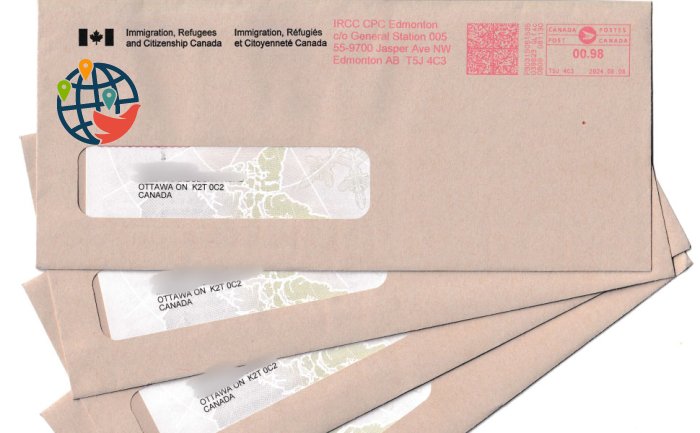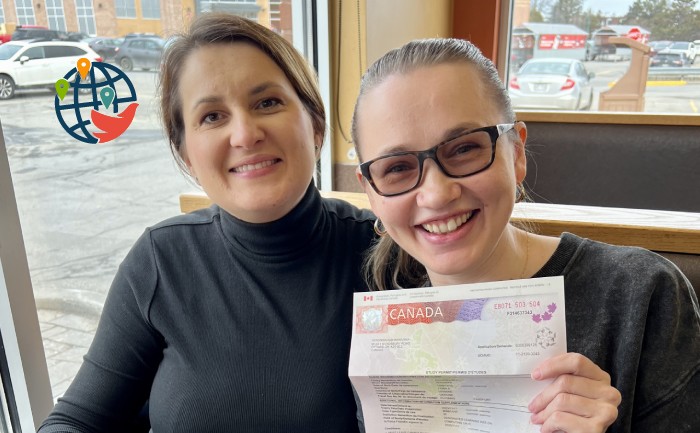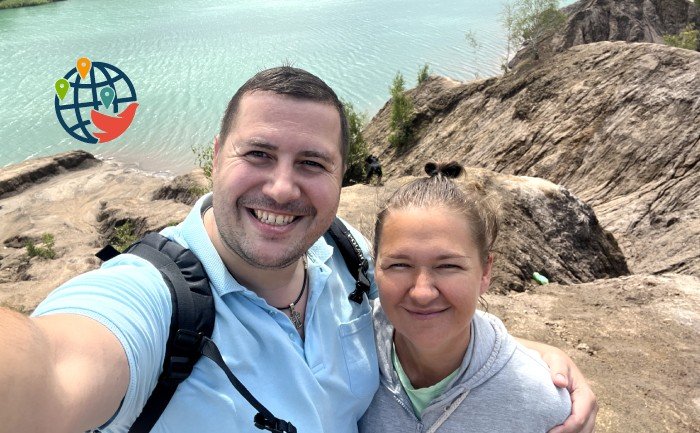Top 4 Canadian provinces that are easier to immigrate to

There are more than 120 immigration programs in Canada, and if you study all of them, you risk confusing yourself and changing your mind about moving.
In this article, you will learn about the 4 provinces that are easier to immigrate to than the others, the specific programs of these regions you can apply for, and their requirements.
We already had an article about the best Canadian provinces to live in. But where it's better, there are always a lot of people who want to move. Everyone wants to go to regions that pay more, have a higher standard of living, are warmer, have more entertainment, and so on. But if you are not a highly educated specialist, your English is weak, and you're over 30, then you have to consider an easier province. Although partly the top provinces for living and top provinces for immigration coincide.
Before we get to the top regions, let us remind you that immigration is complicated anyway. You will face a lot of challenges, from filling out application forms to arriving in Canada and adapting. Don't expect to get a freebie and move to Canada from the comfort of your couch.
The article will be about those provinces where, first, there are many immigration streams, and second, there are streams that do not require a work contract or have reduced language requirements, or you can apply at any age, and so on.
Now to the ranking of the provinces. It is difficult to rank them, from first to fourth, because the opportunities for immigration there are about the same.
Alberta
Let's start with the province of Alberta. You can't say it has many immigration streams, but it does have weighty advantages. Two streams of the provincial program work through the federal Express Entry system: the Alberta Express Entry stream and the Accelerated Tech Pathway.
In both cases, you only need a score of 300 on Express Entry. For comparison, the federal immigration draws now have a passing score of about 490. Also, the Alberta Express Entry stream does not require a job offer. All you have to do is create a profile in the system and indicate that you want to live in Alberta. But a job offer will certainly increase your chances. And knowing French will also increase them.
The Accelerated Tech Pathway requires you to find a job. This program also works through Express Entry, and there, too, you only need to score 300 points. The peculiarity of the stream is that the Alberta government promises to consider applications on a priority basis. By the way, the eligible occupations are not the IT ones, there is a large list.
Two other Alberta streams are suitable for those who have found work. They are the Alberta Opportunity Stream and the Rural Renewal Stream. The requirements are similar: you need a high school education, basic English, and work experience — two years for the Alberta Opportunity Stream and one year for the Rural Renewal Stream. And a job offer, of course. The Rural Renewal Stream allows you to move to small towns. As for the Alberta Opportunity Stream, there's no restriction on occupations or locations where you can settle.
Calgary and Edmonton are the most popular cities in Alberta. The province has a strong economy and you can find jobs in many areas. There is also a lot of entertainment, both urban and outdoor.
One more plus is the high wages. The average income of Alberta residents is one of the highest in Canada. Prices in the province are higher than in many regions but lower than in Ontario and British Columbia. And taxes are also low. All in all, Alberta is a good option both for immigration and living.
Ontario
The next region that is easier to immigrate to may come as a surprise to many, but it is the province of Ontario, the most popular region among immigrants. Seems that if there are a lot of people willing to move there, it should be difficult. But Ontario has a lot of immigration streams, and the province itself wants to invite more immigrants than it currently does.
Let's start with the streams where you don't have to look for a job. In Ontario, there are two. The first is the Human Capital Priorities Stream. It works through Express Entry, you need a degree, a year of work experience, and good English. There are no restrictions on occupations. The second stream is the French-Speaking Skilled Worker. It has the same requirements, but you need to know two languages, English and French, and both at a good level. And the requirements for French are higher.
In Alberta, as you may recall, 300 points are required for the Express Entry streams. In Ontario, you need more. You can apply with any score, but the draws for both streams invite those with at least 450-460.
There's also a good stream in Ontario where you have to find a job. What's good about it then? There's a unique evaluation system there, other provinces don't have that. It's the Foreign Worker Stream. You have to have a skilled occupation, two years of work experience, and a job offer in Ontario. That's it. No age restrictions and no English level requirements. The stream evaluates your job offer first.
Ontario has both metropolitan areas and smaller towns. Ottawa, for example, is much quieter compared to Toronto. The economy is developed, there are jobs, and the wages are good. Plus, you can get a job with the federal government here. But if you want to move to Ontario, consider that it is more expensive to live here than in other regions. Especially if you decide to settle in Toronto. The province has a lot of benefits, but it can be hard to get started.
Next in line are two provinces that are not difficult to immigrate to and are great places to start because they are cheaper to live in.
Nova Scotia
The first region is Nova Scotia, one of the Atlantic provinces of Canada. This region has 7 immigration streams for skilled workers, plus the Atlantic Immigration Program. Let's talk about the most interesting ones.
There is a stream in Nova Scotia that does not require a work contract, which is the Labour Market Priorities Stream. It works through Express Entry, but the province only selects candidates there who are currently in demand. Each draw has different criteria in terms of language level, occupation, education, and so on. It happens so that in one draw they select people with basic English, and in the next draw, they invite those who are good at both English and French. Or in one draw a job offer is required, and in the next one, it is not.
We would also like to highlight the Skilled Worker Stream and Occupations In-Demand Stream. They have similar requirements: you need a high school education, basic English, a year of work experience, and a job offer in Nova Scotia. The difference is that the Occupations In-Demand Stream requires certain low-skilled occupations. In the Skilled Worker Stream, all occupations are eligible.
Separately, let's talk about the Atlantic Immigration Program, which also allows you to move to Nova Scotia. You have to look for a job there, but the requirements are low and there are interesting features. In each province that participates in the program, there are employers who have agreements with the government and can simplify the process of hiring foreigners. Nova Scotia has such a list. It is also possible to move under the Atlantic Program with a little money. It only takes $3,300 CAD for one person and $5,000 for a family of three.
Nova Scotia is not the most popular province in Canada, but it has its advantages. It is one of the cheapest regions to live in, for newcomers it is just right. Also, Halifax, the provincial capital, is a major resort city with a growing economy, so don't think of it as some kind of village.
Saskatchewan
And the last region is Saskatchewan, a province in the Canadian Prairies. It's inexpensive to live there, too, if you compare it to the popular regions. Saskatchewan has 11 immigration streams for workers. But it must be said that half of them are for those already working in the province, so we won't talk about them.
And let's talk about the Occupations In-Demand Stream. It's suitable for candidates with skilled trades who have a year of work experience, any post-secondary education, and basic English. You don't have to look for a job. But you must score a passing score on the provincial scorecard, and meeting the minimum requirements is not enough to do so. To score, you must have a higher education degree, several years of work experience, and a good language level. But since you don't have to look for a job, the requirements are justified.
Another program where you don't need a work contract is the Saskatchewan Express Entry Stream. It is very similar to the previous program, it has almost the same requirements and the same evaluation table. The difference is that you have to have a profile in Express Entry and you need a higher language level.
Another interesting program in Saskatchewan is the Hard-to-Fill Skills Pilot. It is designed for professionals who are hard to find in the province. The requirements there are low: high school education, one year of work experience, and weak English. The disadvantages are that you have to find a job and not all occupations are eligible. But there is a special Saskatchewan website for finding jobs under this pilot, and the province promises to hold job fairs.
And Saskatchewan has the Tech Talent Pathway, which is somewhat similar to Alberta's Accelerated Tech Pathway, only there are fewer eligible occupations. You need a degree, a year of work experience, basic English, and a job offer, and there's a special website for finding jobs. One peculiarity of Saskatchewan's Tech Talent Pathway is that if you found a job and did not immediately apply for immigration, but first arrived and worked for six months on a work visa, you do not have to pass the language test.















